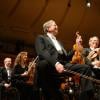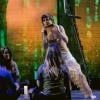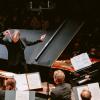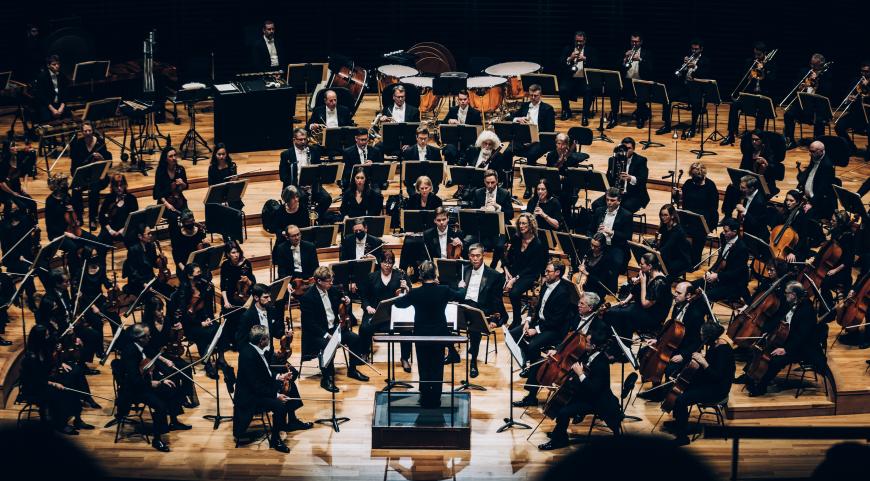
As the musicians of the San Francisco Symphony made their way to the concert hall in Paris last week among demonstrators and riot police, they might have recalled the travels and travails of France’s Guilhem de Poitou.
Born in 1071, the man also known as William IX, Duke of Aquitaine, aka The Troubadour, was the earliest performer in that vernacular poetic and musical tradition whose work survives. Unlike today’s troubadours of San Francisco, who perform and travel without a contract, the duke had palaces and legions of servants.
William’s travels were mostly to the Crusades, so he knew about touring under challenging circumstances, but isn’t taking off to far lands always a problem? And yet, through centuries, musicians have prevailed over distance. Nothing could be more “far-flung” than Hawaii before air travel, and yet there is rich documentation of Italian opera companies touring the then-kingdom nearly two centuries ago.
In San Francisco, almost at the same time (beginning after the city’s birth in 1776 but peaking during the Gold Rush), singers and musicians from far away were frequent visitors. Conversely, soon after the birth of the SF Symphony in 1911, a mere five years after the Great Quake, the orchestra ventured out of the city.
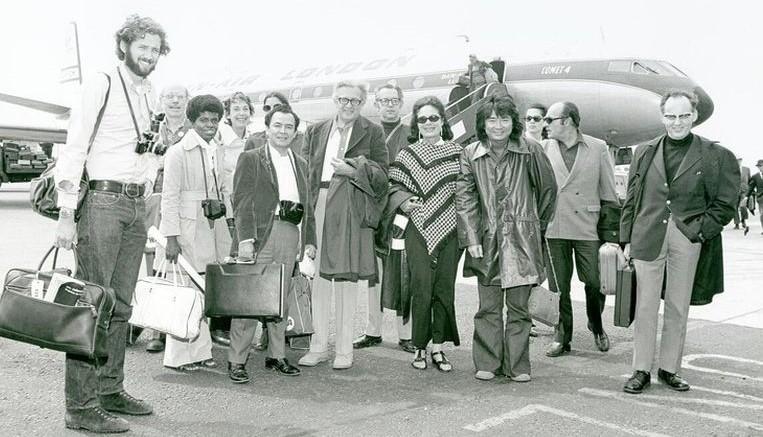
Exactly 76 years ago, beginning in March 1947, conductor Pierre Monteux led the orchestra in a series of 57 concerts in 53 American cities. Since Josef Krips’s Japanese tour in 1968 (when traveling across the ocean on a DC-8 took forever), every SF Symphony music director has led tours through the U.S., Europe, Asia, or all three.
And now, after the pandemic canceled grand plans for Michael Tilson Thomas’s last and Esa-Pekka Salonen’s first tours, the orchestra has completed its first international tour since 2016. Unlike past itineraries, which involved performance in many cities, Salonen’s first tour was called one of “extended residencies” between March 9 and 17 at the Philharmonie de Paris in France and Elbphilharmonie in Hamburg, with one performance at Philharmonie Luxembourg.
Why change the format? SF Symphony CEO Matthew Spivey says:
“One of the great advantages of a residency-style tour is that it allows us to present a full range of concerts that really demonstrate what we do. In addition to our normal orchestral programs, we offered concerts curated and performed by two of our collaborative partners, Nico Muhly and Claire Chase.
“Nico revived his SoundBox performance with Yuja Wang, a tour first, and Claire Chase performed Marcos Balter’s Pan with community musicians in Paris. Both Nico and Claire spoke flawless French from the stage prior to their performances.”
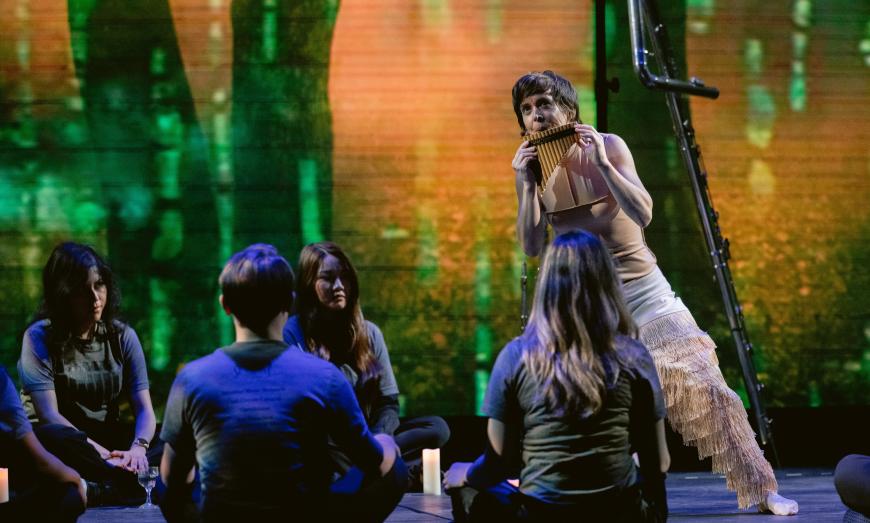
A review in Le Monde of the SoundBox performance said in part:
“Sensitive to the expansion of the repertoire, as well as the renewal of the perceptual experience, the American institution has been exploring this format for nine seasons. It displays an open-mindedness that is embodied in an innovative model of artistic direction encompassing eight collaborating partners touching on various artistic disciplines, such as Nico Muhly, who also writes for the cinema.”
From the musicians’ viewpoint, Paris was both exciting and more difficult than usual. They dealt with jet lag, weather almost as bad as in the newly atmospheric-river’d San Francisco, and anti-government demonstrations, combined with growing mounds of trash from the strike in protest against a first-time increase of the age of retirement in France from 62 to 64.
Violinist Melissa Kleinbart was one of many who ventured out from the hotel near the Arc de Triomphe, strolling down the Champs-Élysées to the Jardin des Tuileries and the Louvre, “forcing myself to stay awake instead of succumbing to the powerful forces of jet lag.”
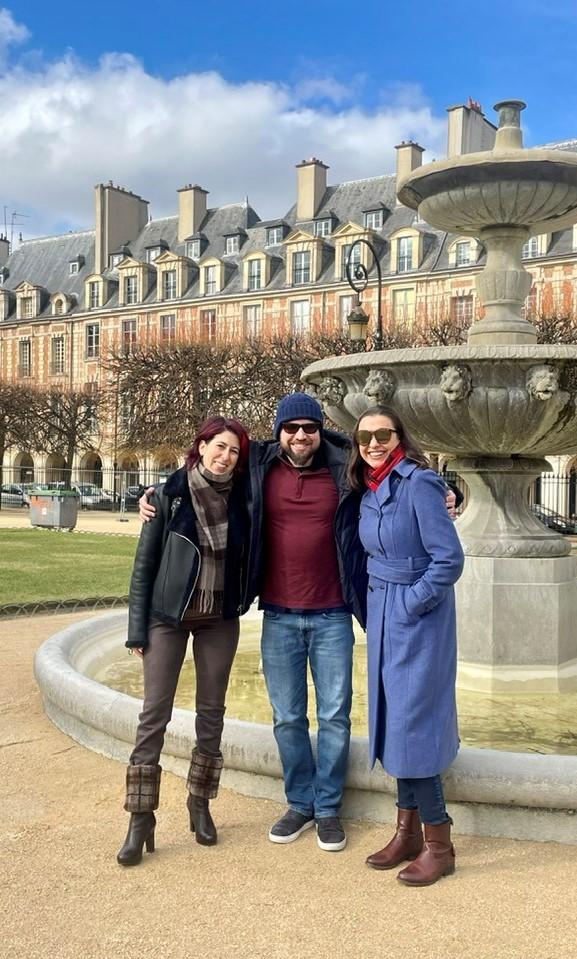
Kleinbart continued:
The following morning, Dan Carlson [principal second violinist], his wife Joy Fellows [one of the orchestra’s viola subs], and I went to a wonderful [Henri] Matisse exhibit at L’Oranagerie Museum, situated just across from the Louvre.
Since both Dan and I were playing in the first ever SoundBox to be presented on a tour, each day leading up to the first concert [March 9] had to include a good bit of practicing, so after enjoying the exhibit, we all headed back to the hotel for some serious work on our instruments before going off to our separate dinners.
The next day involved a full run-through of the SoundBox program, followed by the concert. The strike was affecting us all, as the musicians not playing SoundBox who were supposed to depart [from the U.S.] March 7 all had their flights canceled due to the strike. We were told just before the concert that protesters might make a scene at any time during the concert with outburst of yelling or worse.
It was unsettling, to say the least, but the concert went off without a hitch, and I think the audience loved the intimacy and unusual format of SoundBox, just as audiences in San Francisco do. While it’s impossible to replicate the space we use for SoundBox in S.F., the crew did a great job of constructing the three stages and projecting the background video images that are hallmarks of this series.
Our colleagues finally arrived on March 9, and without the contractually necessary jet-lag day off, there were a lot of exhausted looking people at our full orchestra rehearsal on the 10th. Everyone made it through, and the concert was well received by the audience.”
CEO Spivey’s perspective of the Paris days:
“Things got underway with several performances as part of our residency at Philharmonie de Paris, an amazing arts campus featuring several concert halls, restaurants, and museums. We performed there with MTT shortly after it opened in 2015, and it was wonderful to return there with Salonen. We were honored to represent San Francisco as part of our sister-city relationship with Paris, and our hosts at the Philharmonie, led by their director, Olivier Mantei, could not have been more gracious.
“At the March 11 concert in Paris, the audience wouldn’t stop clapping until Yuja played two encores: [Franz] Liszt’s arrangement of ‘Gretchen am Spinnrade’ by Schubert and ‘The Dance of the Blessed Spirits’ by [Christoph Willibald] Gluck.”
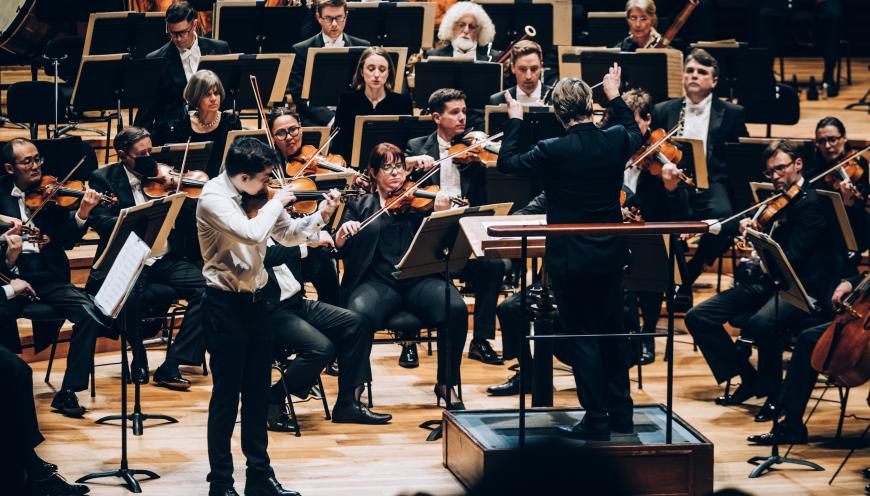
Díapason Magazine reviewed the March 10 concert in Paris with violinist Johan Dalene:
“[Samuel] Barber’s Violin Concerto (1941) highlights the talent of a 22-year-old Norwegian violinist, Johan Dalene. Once again, this winner of the Carl Nielsen Competition impresses with a rare quality: He is not just a virtuoso like there are many; he is a voice. He has a tone, a presence.
“Opening up as the three movements progress, his vision is naturally lyrical, sensual, all in flexible and organic phrasing, but also very restrained. The sound goes seamlessly from a certain dullness to a never aggressive brilliance (treble). This [was] in close dialogue with Salonen, who is also very supple, who has already changed the impeccable sound of the San Francisco Symphony bequeathed by Michael Tilson Thomas, toward something more European.
“The change is in the depth of colors as well as in the warmth of the texture, without losing the celestial transparency cultivated by MTT. [An] excerpt from [Eugène] Ysaÿe’s Sonata for Solo Violin No. 4 given as an encore by Dalene confirms the qualities that make him an artist to follow with attention.”
Of the March 11 concert, the Díapason Magazine review said:
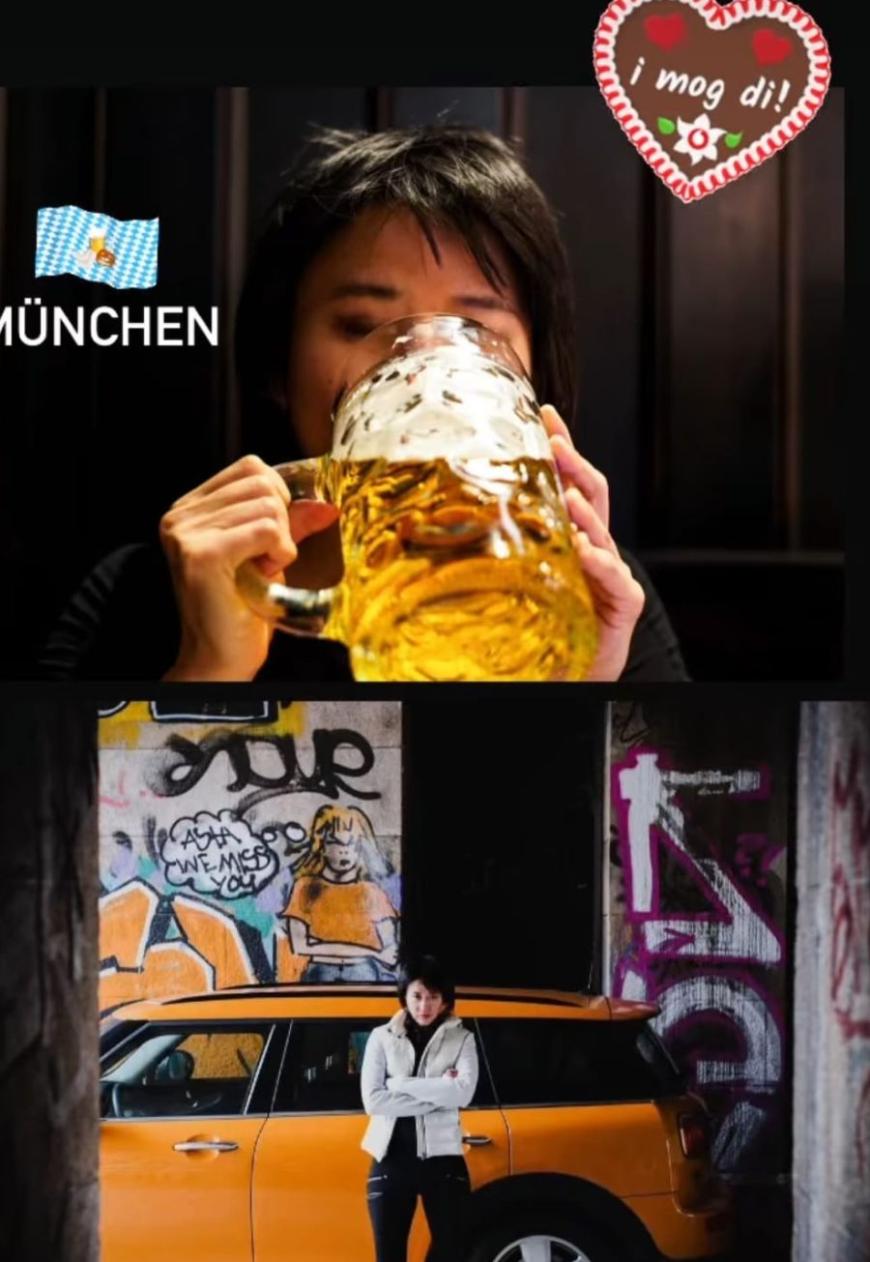
“Yuja Wang entered with a determined step, high heels, and a green dress in sparkling sequins. Her conception of [Sergei] Rachmaninoff’s Concerto No. 3 turns out to be as unconventional as possible. A continuous fantasy makes the lines spring up, emphasizes the countermelody, multiplies the unexpected zoom effects, coats the keyboard with sudden mists, undulations, and mezza voce … all as if by magic.
“Yuja’s performance is both playful and rhapsodic, of great vitality; the profusion of ideas takes precedence over the grand gesture, the dramatic tension, the sonic weight, like a last movement that is slender, dapper, almost perky.
“The direction of Esa-Pekka Salonen remains in the background, despite some beautiful moments, like those almost Sibelian horns (again!) in the Intermezzo. The conductor would not return once with the soloist, leaving her to greet alone, on multiple occasions, the public who acclaims her. The 36-year-old artist offered two encores … of remarkable clarity and … played like a delicate music box.”
The March 15 concert in Hamburg’s Elbphilharmonie was the SF Symphony’s first time playing in that unique venue by architects Herzog & de Meuron. All concerts, with tickets for 50 euros and up, had been sold out long in advance. The Grand Hall of the Elbphilharmonie seats up to 2,100 in “vineyard style,” the audience surrounding the stage in ascending rows. The acoustics of the hall (by Yasuhisa Toyota) are especially suitable for concerts with large orchestras.
In addition to Dalene’s and Yuja’s encores (played at each of their performances), the orchestra played two encores for both orchestral performances in Hamburg, which Salonen announced from the stage in German.
Reviewing the March 15 performance, Jari Kallio wrote in Adventures in Music:
“A soaring performance from the San Francisco Symphony and Salonen with astonishing craft and commitment, giving rise to an extraordinary sonic experience. Conceived with an impeccable sense of continuity, the score was realized with admirable musicality, resulting in a truly one-of-a-kind orchestral adventure, extending far beyond the last echoes of the awesomeness of [Steven] Stucky’s closing chord.
“A reading of sensitivity and inspired vitality, Nyx was given a resplendent outing by the San Francisco Symphony. Alongside virtuoso contributions from the horn section and principal clarinet, substantial colorist input from the percussion section certainly deserve[s] a special mention here. With the composer at the helm, the performance conveyed exceptional vividness and clarity.
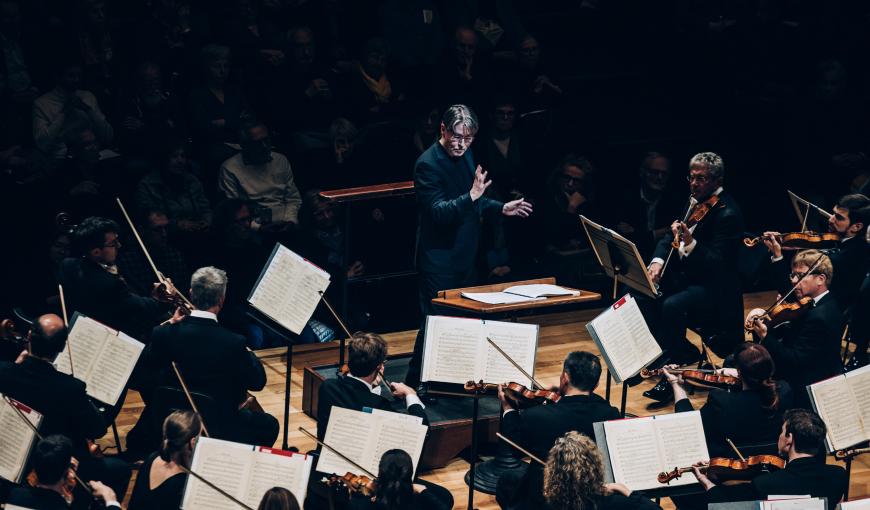
“Dressed in tremendous sounding garb at Elbphilharmonie, Salonen’s reading with the orchestra embraced [Béla] Bartók’s extraordinary mixture of the mysterious and the brutal in full measure, manifesting itself in terrific sonorities of almost tactile intensity. As committed partners-in-crime, the San Francisco Symphony musicians delivered an earthshaking scenario, one to dwell in memory for a good long while.
“After the storm of Bartók, two encores ensued. First a touch of contemplative serenity in the guise of [Jean] Sibelius’s best-loved Valse triste, Op. 44, No. 1, followed by full-on Wagnerian festivities of the Act 3 Prelude from Lohengrin. An evening of dreams, and beyond, the San Francisco players and Salonen sure know how to throw a party.”
After the performance on March 16, Salonen hosted a party for the whole orchestra, traveling staff, and the patrons’ tour group.
“Tours,” writes Spivey, “have a unique ability to bring an ensemble together, and the bond between Salonen and our musicians has grown tighter than ever. The orchestra is playing with an exceptional level of energy and cohesion, and I’ve been so proud to witness the incredible enthusiasm for the orchestra at every turn.”
The thought was seconded, with a quick reference to the contract talks, by SFS Principal Oboist Eugene Izotov, who wrote in an Instagram caption at the end of the tour:
“Great Resolve despite Un-resolved contract: really proud of my San Francisco Symphony colleagues for spectacular concerts in Paris, Luxembourg, and Hamburg.”
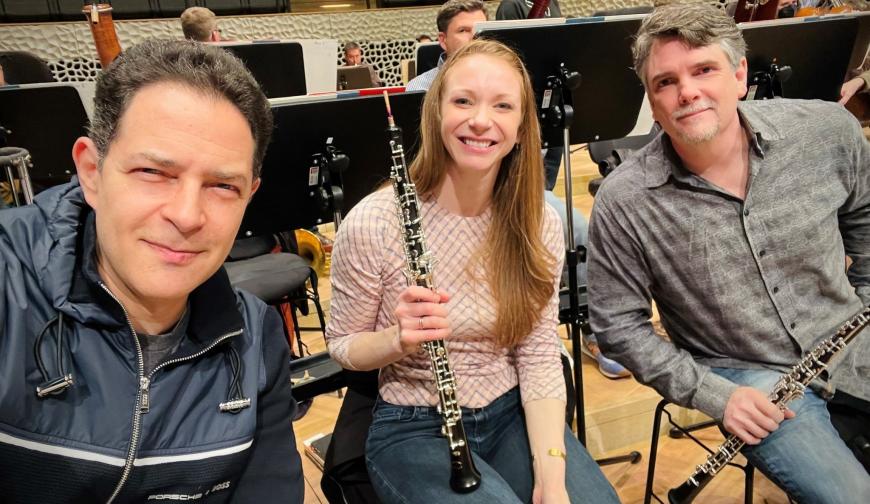
In individual terms, the tour meant a kaleidoscope of experiences for each of the 100 musicians. For violinist Kleinbart, one of the highlights was playing the piano which Johannes Brahms used to give lessons:
“SFS board members were getting a private tour of the Brahms Museum in Hamburg, and I was among three musicians also invited. After looking at some original manuscript pages from Brahms’s Requiem, his First Piano Sonata [Op. 1], and even the beginning of his Fourth Symphony, along with programs of concerts and old photographs, we went upstairs to the library and saw the beautiful old table piano, with ornate designs, only two strings per key and one pedal.
“The docent took the covering off the keys [and] asked if anyone was a professional pianist. None of us could claim that level of proficiency, but Cathy Payne [SFS’s piccolo player] and I took turns playing, and for me it felt magical.
“I was like a giddy child who had been given free range in a candy store. Touching the same keys that Brahms had played on so long ago felt like I was being connected to a fabled history of the great classical composers.”


